 Rising health-care costs have made wellness programs a good deal for companies that invest in them, and now Uncle Sam has stepped in to make it easier to create and fund them. The new Health Care Reform Plan enables companies with fewer than 100 employees to receive federal assistance from a $200 billion grant to establish wellness programs, and in 2014, the wellness reward levels that all companies can offer to employees will increase by 50%.
Rising health-care costs have made wellness programs a good deal for companies that invest in them, and now Uncle Sam has stepped in to make it easier to create and fund them. The new Health Care Reform Plan enables companies with fewer than 100 employees to receive federal assistance from a $200 billion grant to establish wellness programs, and in 2014, the wellness reward levels that all companies can offer to employees will increase by 50%.
Wellness programs typically yield a 300% or greater return on investment, but you've got to incentivize employees to become involved. Here are three case studies of successful programs to help you get started.
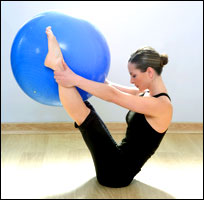 Case Study #1 - Meredith Corporation
Case Study #1 - Meredith CorporationDes Moines, Iowa-based media and marketing company Meredith Corporation has had an award-winning wellness program since 2006. "We focus on metabolic disease; elevated blood pressure, cholesterol, glucose and triglyceride levels and waist circumference," says Program Manager Tim O'Neil. "These inequities can have catastrophic impacts on employee well-being and health claims."
To tackle these issues, Meredith brought on board a third-party diagnostic group to screen employees. Results were given to employees, and the company received an aggregate no-names report that catalogued total company results. Once the data was collected, O'Neil says, "the challenge was how to use it to attack health concerns in each of Meredith's 22 state locations – each with its own culture."
For incentives, it was obvious a one-size-fits-all approach wouldn't work. A variety of incentive plans were tailored to the needs of each Meredith office. "We formed teams to compete against each other in weight loss and physical activity categories for prizes that included branded apparel and keep-fit items like exercise bands, stability balls, fitness DVDs, healthy cookbooks and cash prizes," O'Neil says. Other Meredith plans offer wellness points worth up to a $500 annual discount on health plan contributions and reimbursements toward health club memberships, personal training, nutrition counseling and participation in sporting events. Points are accumulated and tracked via the company's website, Meredithwellness.com.
Meredith's results were impressive. From 2004 to 2006 the company saw annual health cost increases of 18.5%. After introducing the wellness plan in 2006, O'Neil says, "We lowered this to an average 1% annual increase from 2006 to 2011, saving us approximately $10 million vs. an investment of $2.5 million – an impressive $4:$1 ROI."
Meredith's wellness program continues to evolve. "We couldn't keep doing the same thing year after year," O'Neil says. "As we progressed, we went to a tobacco-free workplace, and in 2008, we added Wellness Bucks and reimbursements as incentives. We've also introduced group courses and individual instruction, and this year, we'll add spouses to our screening programs."
Case Study #2 – Anderson Performance Improvement Company 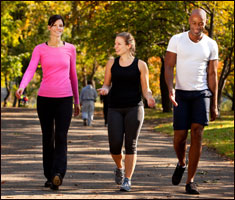
Louise Anderson, CEO of Minnesota-based incentive and recognition system provider Anderson Performance Improvement Company, was certain that the health benefits of increased employee activity would lead to an increase in per-client tracking hours and a corresponding surge in overall productivity. "We're not self-insured and we had a pretty healthy crew to start with," says Anderson, "so our company's main focus in setting up our Move It wellness program was productivity, not health insurance costs."
Anderson gave all employees pedometers to track their walking. This was coupled with walking meetings and encouragement to park farther out in the company lot. "Our walking efforts were accompanied by tips on how to increase physical movement and an incentive award system where our employees could gain points for increased activity that are redeemable for over 4,000 catalog items including clothing, jewelry, electronics and kitchen equipment," Anderson says.
Anderson's Sonic Boom wellness website is also a strong player in increasing employee participation in Move It. The website tracks both individual and team activity on a daily, weekly and monthly basis. Individuals are given private access to their own results, and everyone can view team results. Teams compete for points against other Sonic Boom teams on a national basis.
Move It concentrates on healthy eating. "We no longer allow things like leftover holiday candy in the office," says Anderson. "If vendors want to bring in snacks, they're asked to furnish fruit or granola instead of doughnuts, and office celebrations substitute zucchini brownies and strawberry cakes for the store-bought varieties."
The results show Move It has led to a more efficient workplace. "Over a two-year period, we've seen an 11% increase in measured productivity," Anderson says. "This means not only greater output, but that we can do more for our clients with the same workforce."
Anderson offers a tip for those starting on the wellness track: "Think about the things you spend money on versus the health effects they produce. For example, holiday bonuses can be substituted for alcohol-consuming holiday parties. Efforts like these can lead to greater productivity and lower costs, and if you're self-insured, you'll save twice as much."
 Case Study #3 – Group & Pension Administrators, Inc.
Case Study #3 – Group & Pension Administrators, Inc. The goals for the BeWell wellness program aim to help employees stay healthy. "As an organization, we hope to improve productivity and control health-care costs by reducing health risks," says Kathy Enochs, COO of Group & Pension Administrators, Inc. (GPA), a Dallas-based third-party benefit administrator.
Enochs started small with BeWell, offering free fruit for employees in the break room and discounting healthy items in company vending machines. "The fruit didn't go over big at first," she says, "but now it's gone before the next basket arrives." Confidential employee health assessments and biometric screenings were next, along with access to GPA's one-on-one health professionals, including telephonic coaching and on-site visits.
BeWell doesn't just focus on physical activity and healthy eating; it incorporates financial education, spiritual awareness, stress management, blood pressure control, cholesterol management and educating participants living with multiple chronic conditions. "In order to encourage a high percentage of our employees to participate in BeWell activities, we use wellness incentives to propel the program," Enochs says. "Non-smokers get a 20% reduction in health-care costs, and employees who participate in wellness activities can accumulate incentive points toward gift cards and merchandise including bicycles, heart rate monitors and cookware. In addition, employees receive a paid day off for every year they participate in the program."
BeWell and its incentives have greatly benefited the company. "In 2008, 34% of our employees had five or more high-risk health issues," says Enochs. "By 2011, we reduced that to 18%. We've also made significant reductions in stress and weight levels, and we've cut employee smoking by 50%, but it didn't happen overnight. Our results were achieved through comprehensive planning, effective communication and senior-level support."
Enochs' advice to those starting their own wellness program is to not rush it. "Make sure you think your strategy through, and survey your employees to see what incentives and activities they might be interested in," she says. "Most importantly, make sure your program launch is well-planned because first impressions last."
-Successful Promotions-
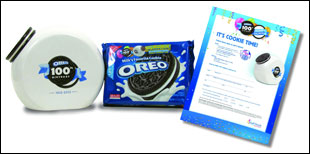 To commemorate its centennial anniversary, Kraft
Foods, the distributor of the Oreo, launched a major nationwide promotional
campaign which involved a consumer on-pack offer. A limited-edition, custom Oreo
100th Birthday Cookie Jar was chosen as the premium item to be distributed.
According to a company spokesperson who worked on the campaign, the cookie jar
made sense from a promotional standpoint, and the lid design also reinforced the
core equity of the brand.
To commemorate its centennial anniversary, Kraft
Foods, the distributor of the Oreo, launched a major nationwide promotional
campaign which involved a consumer on-pack offer. A limited-edition, custom Oreo
100th Birthday Cookie Jar was chosen as the premium item to be distributed.
According to a company spokesperson who worked on the campaign, the cookie jar
made sense from a promotional standpoint, and the lid design also reinforced the
core equity of the brand. “We offered festival guests 12 different wines
from around the world. Since we source wines globally, the wines hailed from
Bordeaux to Napa, all under the Cameron Hughes label,” she says. “We are little
people, and we wanted to have the greatest presence possible there.”
“We offered festival guests 12 different wines
from around the world. Since we source wines globally, the wines hailed from
Bordeaux to Napa, all under the Cameron Hughes label,” she says. “We are little
people, and we wanted to have the greatest presence possible there.”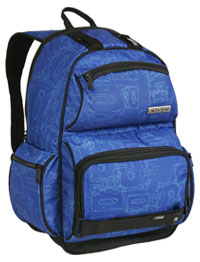 These days, attracting any new business can be tough, let alone business from tweens, who tend to stash any money they haven’t spent yet in their desk drawers.
These days, attracting any new business can be tough, let alone business from tweens, who tend to stash any money they haven’t spent yet in their desk drawers.
 And Ubiquitor's 12-pack cooler bags have been an unexpected hit with clientele, according to Grabowski. "The first holiday that we were in business, I invested in the cooler bags. They were all black and said ‘Ubiquitor' on the side," he says. "People really took toward that more than a lot of the other stuff. I got a lot of requests like, ‘Can you get one for my wife?,' which I didn't expect coming out of it, but it's really been a nice side effect."
And Ubiquitor's 12-pack cooler bags have been an unexpected hit with clientele, according to Grabowski. "The first holiday that we were in business, I invested in the cooler bags. They were all black and said ‘Ubiquitor' on the side," he says. "People really took toward that more than a lot of the other stuff. I got a lot of requests like, ‘Can you get one for my wife?,' which I didn't expect coming out of it, but it's really been a nice side effect."
 Case Study #1 - Meredith Corporation
Case Study #1 - Meredith Corporation Louise Anderson, CEO of Minnesota-based incentive and recognition system provider Anderson Performance Improvement Company, was certain that the health benefits of increased employee activity would lead to an increase in per-client tracking hours and a corresponding surge in overall productivity. "We're not self-insured and we had a pretty healthy crew to start with," says Anderson, "so our company's main focus in setting up our Move It wellness program was productivity, not health insurance costs."
Louise Anderson, CEO of Minnesota-based incentive and recognition system provider Anderson Performance Improvement Company, was certain that the health benefits of increased employee activity would lead to an increase in per-client tracking hours and a corresponding surge in overall productivity. "We're not self-insured and we had a pretty healthy crew to start with," says Anderson, "so our company's main focus in setting up our Move It wellness program was productivity, not health insurance costs." Case Study #3 – Group & Pension Administrators, Inc.
Case Study #3 – Group & Pension Administrators, Inc.  College students are known for their ability to
work hard and play hard. So it's no surprise that the makers of Code Blue, an
all-natural recovery drink, wanted to target the college demographic in a recent
marketing blitz.
College students are known for their ability to
work hard and play hard. So it's no surprise that the makers of Code Blue, an
all-natural recovery drink, wanted to target the college demographic in a recent
marketing blitz.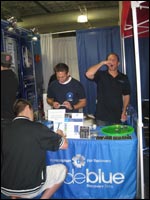 Part trade show, part festival, the 25-year-old CollegeFest
brings together more than 17,000 brand-loyal students and connects them with
nearly 100 national and local brands; promotional items and prizes are given
away, and live music performances entertain the crowds.
Part trade show, part festival, the 25-year-old CollegeFest
brings together more than 17,000 brand-loyal students and connects them with
nearly 100 national and local brands; promotional items and prizes are given
away, and live music performances entertain the crowds.  Frumin says education about the product, especially the
recovery concept, is critical to the success of Code Blue, which he calls a
"healthier, more functional Gatorade. Students are interested in what is
healthy." He notes that Code Blue is made with natural ingredients like vitamins
C, B12 and B6, and has three times more electrolytes than Gatorade. In addition,
it's the first ready-to-drink beverage containing sustamine, a liquid glutamine
that aids muscle recovery. "Code Blue is not an energy drink," Frumin says.
"Rather, it's more about hydration."
Frumin says education about the product, especially the
recovery concept, is critical to the success of Code Blue, which he calls a
"healthier, more functional Gatorade. Students are interested in what is
healthy." He notes that Code Blue is made with natural ingredients like vitamins
C, B12 and B6, and has three times more electrolytes than Gatorade. In addition,
it's the first ready-to-drink beverage containing sustamine, a liquid glutamine
that aids muscle recovery. "Code Blue is not an energy drink," Frumin says.
"Rather, it's more about hydration."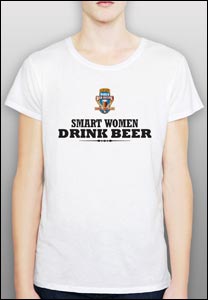

 Employees at the company's corporate headquarters and its more than 200 franchises in the U.S., Canada and Australia keep a number of the toy trucks on hand and give them out whenever an opportunity presents itself. Whether during office tours, on jobs at houses with kids or when meeting with prospective customers, the trucks have become ubiquitous branding tools for the company.
Employees at the company's corporate headquarters and its more than 200 franchises in the U.S., Canada and Australia keep a number of the toy trucks on hand and give them out whenever an opportunity presents itself. Whether during office tours, on jobs at houses with kids or when meeting with prospective customers, the trucks have become ubiquitous branding tools for the company.